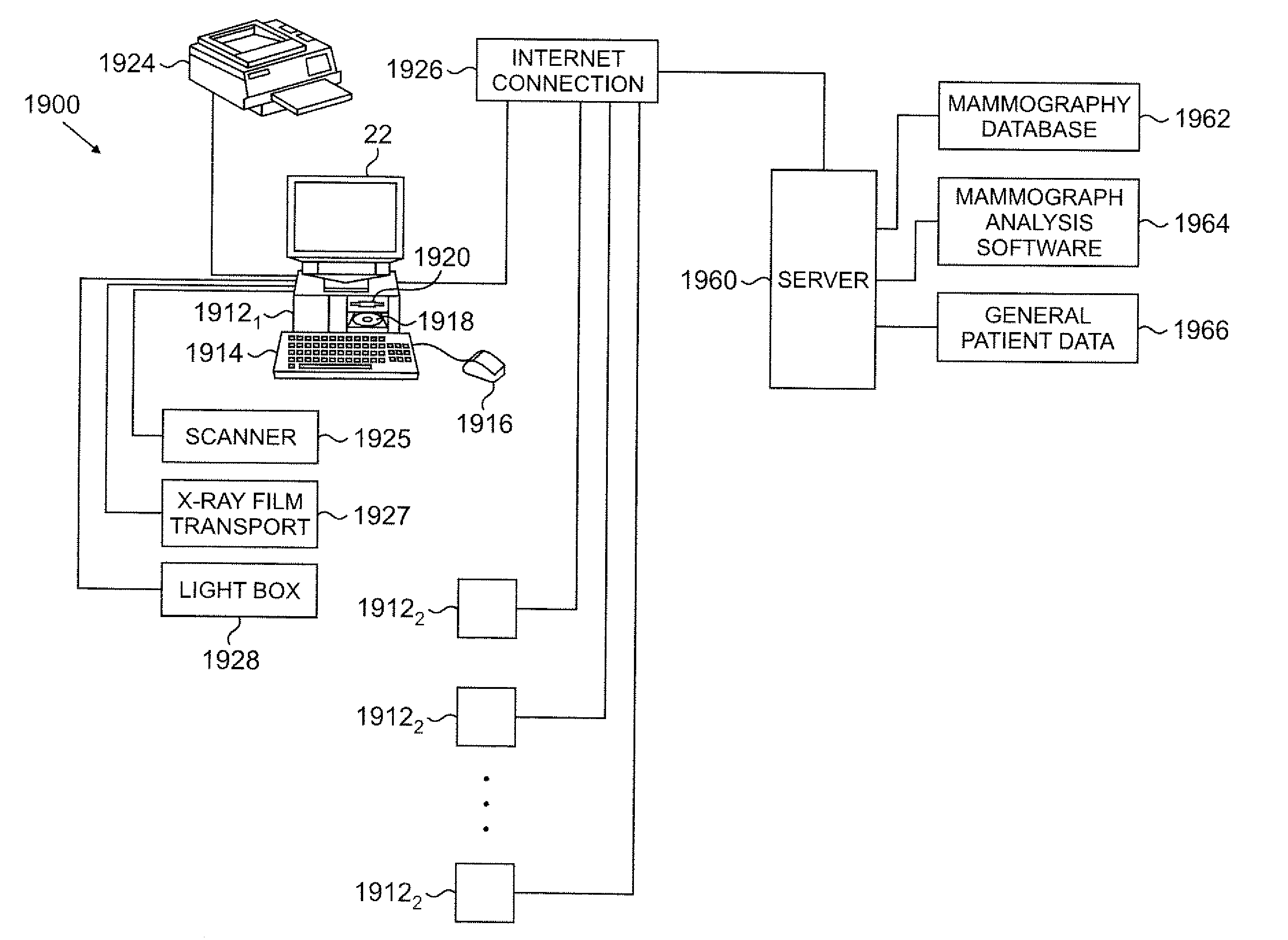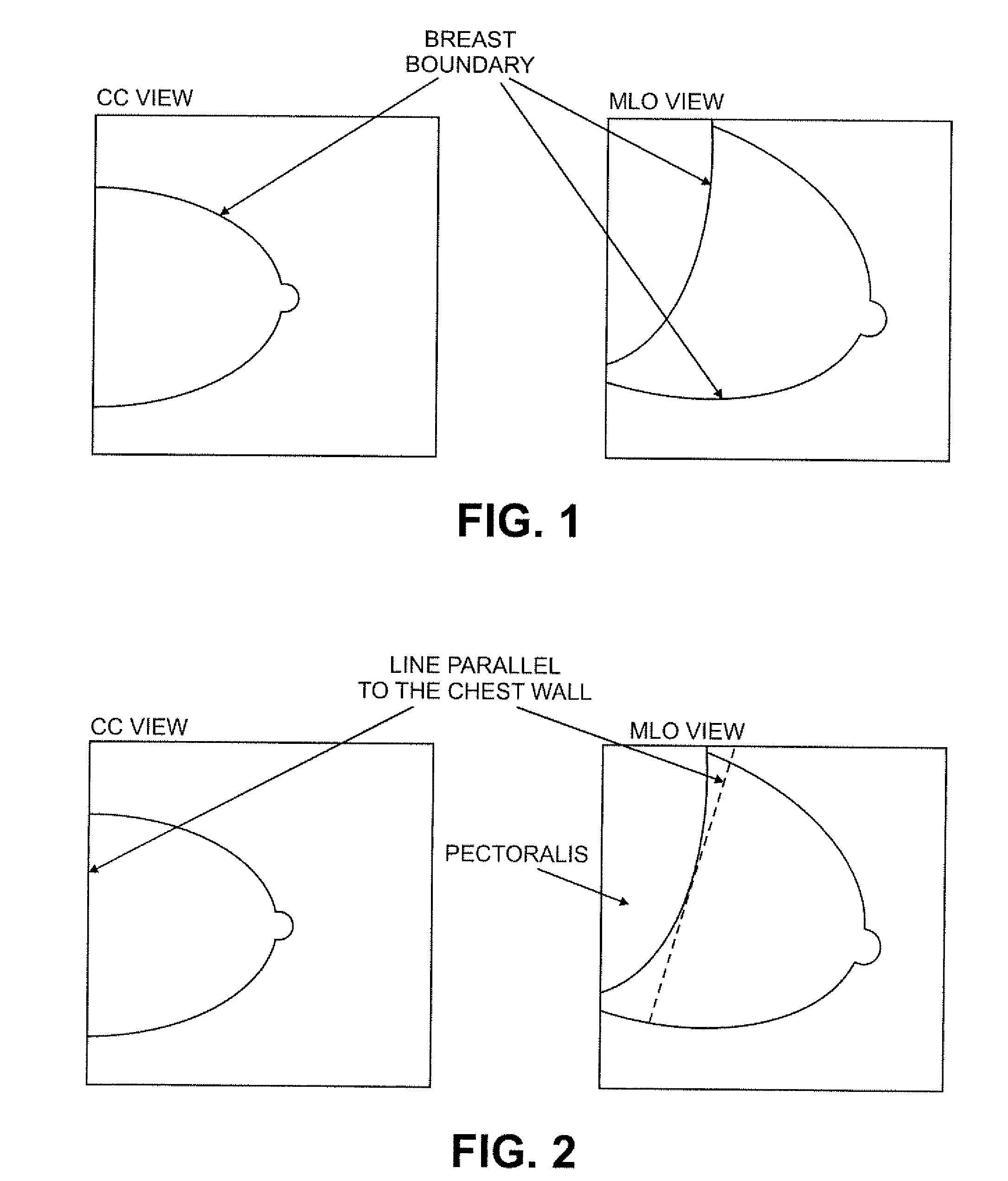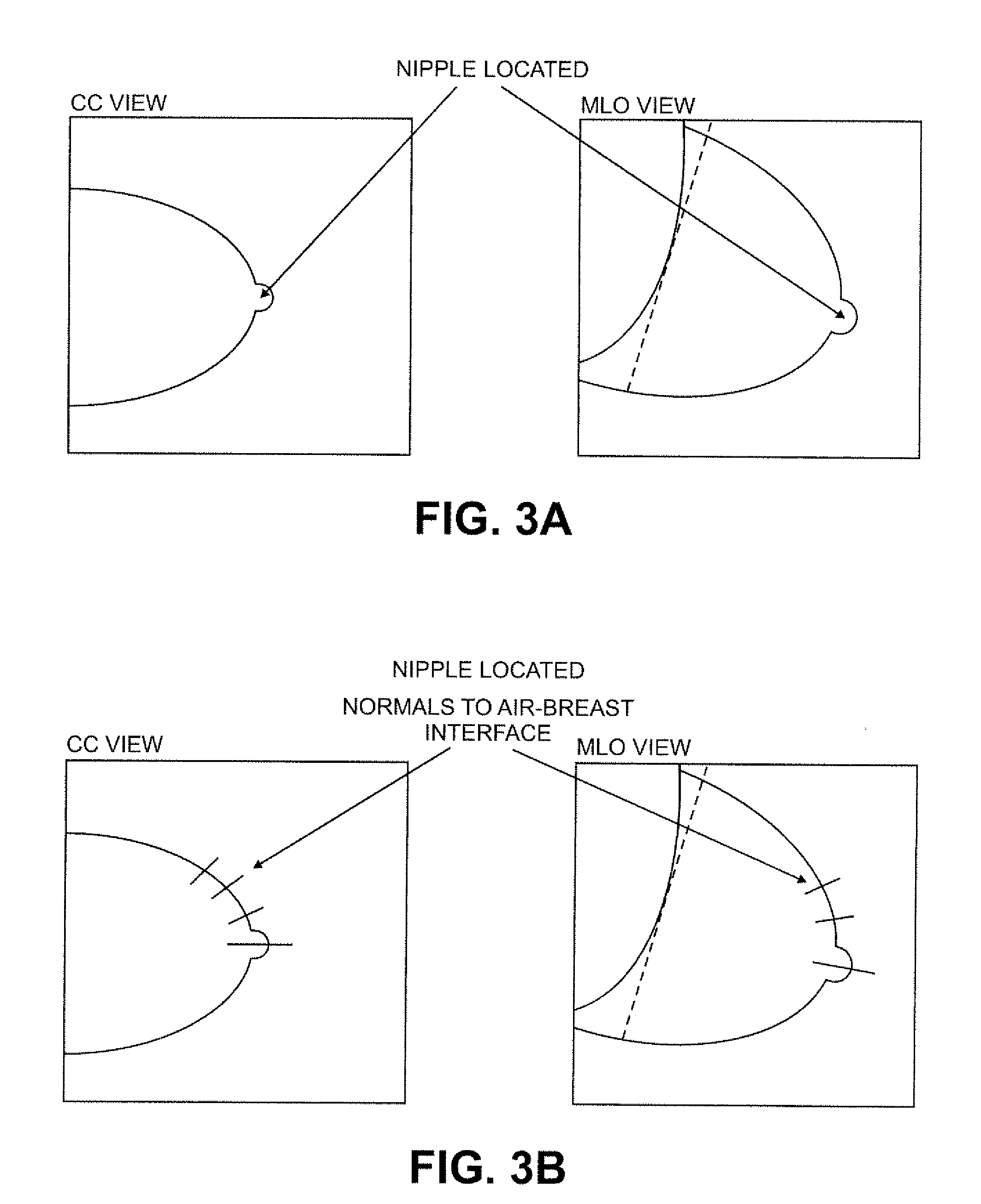Methods and Apparatus for Computer Automated Diagnosis of Mammogram Images
- Summary
- Abstract
- Description
- Claims
- Application Information
AI Technical Summary
Benefits of technology
Problems solved by technology
Method used
Image
Examples
Embodiment Construction
[0021]With reference to FIGS. 1-14 which show illustrative mammography views used to illustrate aspects of the present invention and FIGS. 15A and 15B which show a process 1500 in accordance with the invention, one embodiment of the invention starts with digital data from a standard screening mammography study comprising four views, two of each breast as follows:
[0022]left cranio-caudal (LCC) and left medio-lateral oblique (LMLO); and
[0023]right cranio-caudal (RCC) and night medio-lateral oblique (RMLO).
Medio-lateral (ML) views may be used instead of the MLO views. It is further noted that only two views are necessary, but where only two views are employed, they must be of the same breast. For example, left CC and left MLO views are acceptable, hut left CC and right MLO view are not an acceptable image pair.
[0024]In step 1502 of process 1500 of FIG. 15A, the output of a digital mammography system, or the output of a digitizer that has scanned a film mammogram, is converted to any co...
PUM
 Login to View More
Login to View More Abstract
Description
Claims
Application Information
 Login to View More
Login to View More - R&D
- Intellectual Property
- Life Sciences
- Materials
- Tech Scout
- Unparalleled Data Quality
- Higher Quality Content
- 60% Fewer Hallucinations
Browse by: Latest US Patents, China's latest patents, Technical Efficacy Thesaurus, Application Domain, Technology Topic, Popular Technical Reports.
© 2025 PatSnap. All rights reserved.Legal|Privacy policy|Modern Slavery Act Transparency Statement|Sitemap|About US| Contact US: help@patsnap.com



